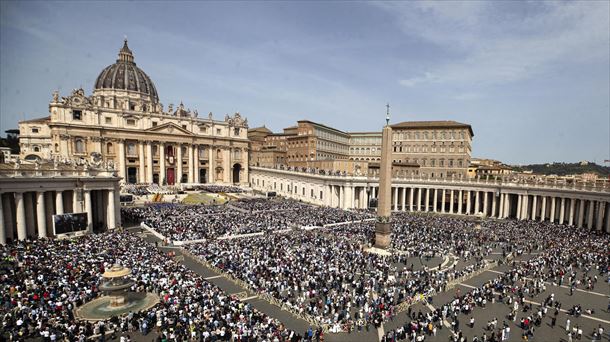This presupposes restriction of freedoms and rights in Lugansk, Donetsk, Zaporizhia and Kherson
At a new meeting of the Russian Security Council, the country’s president, Vladimir Putin, just announced in front of television cameras that martial law will be imposed from tomorrow, Thursday, in the Ukrainian regions of Donetsk, Lugansk, Kherson and Zaporizhia, which are unilaterally annexed by Moscow on September 30 after they declared themselves independent and held plebiscites that have described Kiev, the West and even the UN as illegal and fraudulent.
The duration of this exceptional measure has not yet been announced. The presidential decree is due to be approved this afternoon in the Federation Council (upper house) of the Russian parliament. According to Putin, his new decision is due to the fact that “Ukraine rejects any negotiation proposal, continues to bomb and sends a sabotage group to our territory.” He cited as an example the recent attack on the Kerch Bridge, which connects the Crimean peninsula to mainland Russia, and assured that Kiev “also prepared attacks on energy and transport facilities in Russia, including nuclear power plants.”
Putin also agreed today to declare a “state of medium alertness” in Russia’s border regions with Ukraine of Krasnodar, Belgorod, Briansk, Voronezh, Kursk, Rostov-on-Don, Crimea and in the city of Sevastopol, on the foot of the Black Sea fleet. Similarly, in the southern and central regions of Russia, maximum alertness is set at the military level. On the other hand, the leaders of the annexed territories will now have “extra powers” to ensure public order and security in the vital installations.
The martial law allows the authorities to take a wide range of measures, such as introducing censorship, tapping telephone calls, arresting people without charge for 30 days and introducing a curfew. It obliges the powers to strengthen the protection of vital facilities, official buildings, ensure public order and allows them, if necessary, to restrict the movements of citizens to other regions of the country or abroad. They could also seize assets for defense purposes and involve the population in infrastructure repair work or firefighting.
On September 30, the solemn ceremony of annexation of Donetsk, Lugansk, Kherson and Zaporizhia to the Russian Federation took place in the Kremlin. The four treaties were ratified on October 3 in the State Duma (Lower House) of the parliament and the following day in the Federation Council. The four “federal constitutional laws” were promulgated by the president on October 5, completing the annexation process. Thus, the Russian Constitution was amended in Article 65, Section 3 of which (federal structure) now contains the names of the four annexed entities.
The borders of these four new «Russian republics» will be the administrative boundaries established for Soviet Ukraine. However, Ukrainian troops control a large part of Donetsk, Zaporizhzhya and Kherson. Lugansk is the only one to be almost completely occupied by Russian and separatist forces, although the Ukrainian army has a continuous counter-offensive against Severodonetsk and Lisichansk, both cities belonging to the Lugansk region.
Source: La Verdad
I am an experienced and passionate journalist with a strong track record in news website reporting. I specialize in technology coverage, breaking stories on the latest developments and trends from around the world. Working for Today Times Live has given me the opportunity to write thought-provoking pieces that have caught the attention of many readers.



